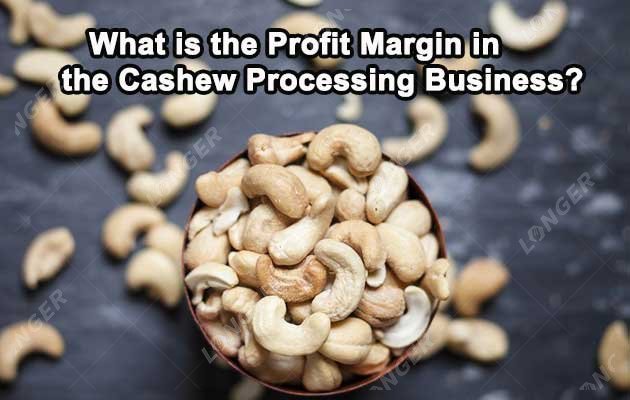 Serena /
Serena /  May 10,2023
May 10,2023
What is the Profit Margin in the Cashew Processing Business?
Introduction
The cashew nut industry has experienced remarkable growth in recent years, with increasing demand for cashews as a healthy snack and a versatile ingredient in various culinary applications. As a result, the cashew processing business has gained significant attention as a lucrative venture. However, understanding the profit margins involved is crucial for entrepreneurs and investors looking to enter this industry. In this article, we will delve into the factors that influence the profit margin in the cashew processing business and explore strategies to maximize profitability.
The cashew nut industry has experienced remarkable growth in recent years, with increasing demand for cashews as a healthy snack and a versatile ingredient in various culinary applications. As a result, the cashew processing business has gained significant attention as a lucrative venture. However, understanding the profit margins involved is crucial for entrepreneurs and investors looking to enter this industry. In this article, we will delve into the factors that influence the profit margin in the cashew processing business and explore strategies to maximize profitability.
Factors Affecting Profit Margin
1. Raw Material Costs: The primary input in cashew processing is the raw cashew nuts. The cost of acquiring high-quality raw cashews plays a vital role in determining the profit margin. Factors such as global supply and demand, harvest season, geographical origin, and quality standards can significantly impact the price of raw cashews.
2. Labor and Operational Costs: Cashew processing involves various stages, including shelling, drying, peeling, grading, and packaging. Labor costs associated with these processes, along with operational expenses such as electricity, water, machinery maintenance, and storage, contribute to the overall cost structure of the business.
3. Technology and Machinery: The use of advanced cashew nut processing machinery and technology can streamline the processing operations, reduce labor requirements, and improve efficiency. However, investing in modern equipment can be capital-intensive, impacting the profit margin in the short term. Balancing the initial investment with long-term cost savings is essential.
4. Value Addition: Apart from processing raw cashews, value addition through roasting, flavoring, and packaging can significantly enhance the profit margin. Providing unique and innovative products tailored to consumer preferences and market trends can create a competitive edge and allow for higher pricing.

Maximizing Profitability
1. Strategic Sourcing: Establishing relationships with reliable suppliers and exploring direct sourcing from cashew-producing regions can help in securing raw cashews at competitive prices. Negotiating favorable contracts and maintaining a consistent supply chain are crucial to controlling raw material costs.
2. Efficient Operations: Implementing streamlined processing techniques, optimizing machinery usage, and adopting automation wherever feasible can reduce labor costs and increase productivity. Regular maintenance of cashew machinery ensures operational efficiency, minimizing downtime and maximizing output.
3. Quality Control: Ensuring consistent quality standards throughout the processing stages is essential for customer satisfaction and market competitiveness. Implementing stringent quality control measures can reduce product losses and the likelihood of rejections, thereby safeguarding profit margins.
4. Diversification and Value Addition: Expanding product offerings to include roasted cashews, flavored variants, or ready-to-eat cashew snacks can attract a broader customer base and command higher margins. Market research and consumer trends analysis can guide product development and innovation strategies.
5. Marketing and Distribution: Effective marketing strategies, including branding, packaging design, online presence, and targeted advertising, can create brand awareness and attract customers. Optimizing distribution channels, both online and offline, ensures wider market reach and customer accessibility.
Risk Management
As with any business, risk management is crucial in the cashew processing industry. Fluctuations in raw material prices, changes in consumer preferences, currency exchange rates, and market competition can impact profit margins. Therefore, diversifying the customer base, maintaining a healthy cash flow, and monitoring market trends are essential for mitigating risks and sustaining profitability.
Conclusion
The profit margin in the cashew processing business is influenced by a multitude of factors, including raw material costs, labor and operational expenses, technology investments, and value addition strategies. By focusing on strategic sourcing, efficient operations, quality control, value addition, and effective marketing, entrepreneurs can maximize profitability in this industry. Furthermore, diligent risk management practices are necessary to navigate potential challenges and ensure long-term success.

 0086-15515597212
0086-15515597212 serena@machinehall.com
serena@machinehall.com

